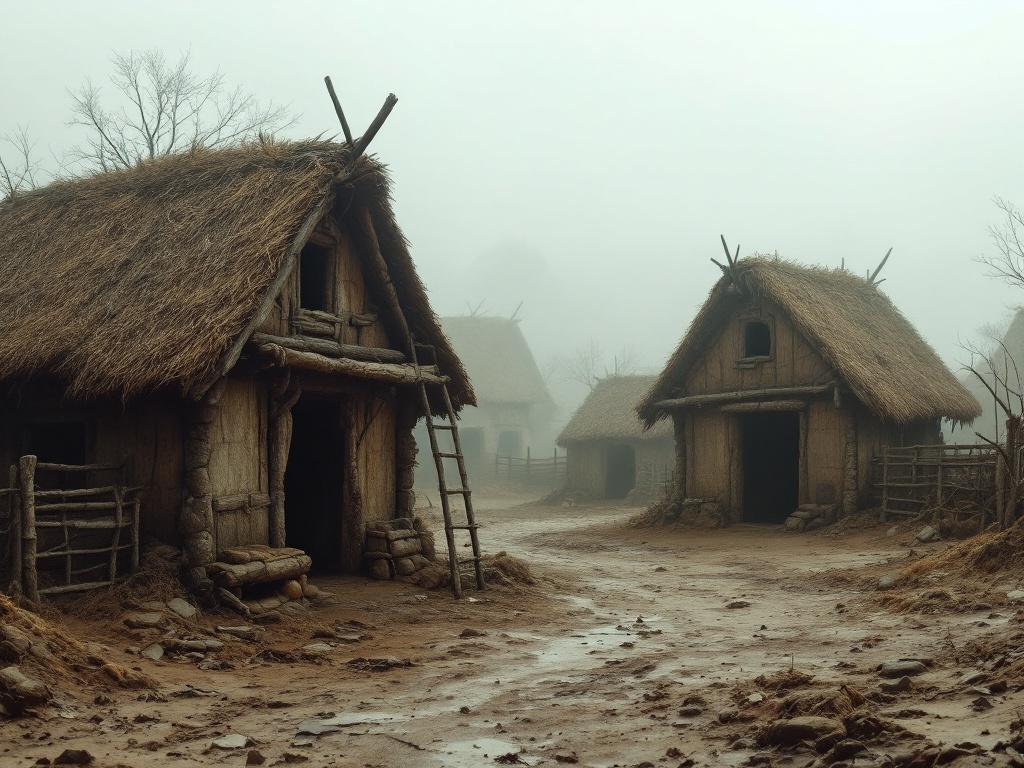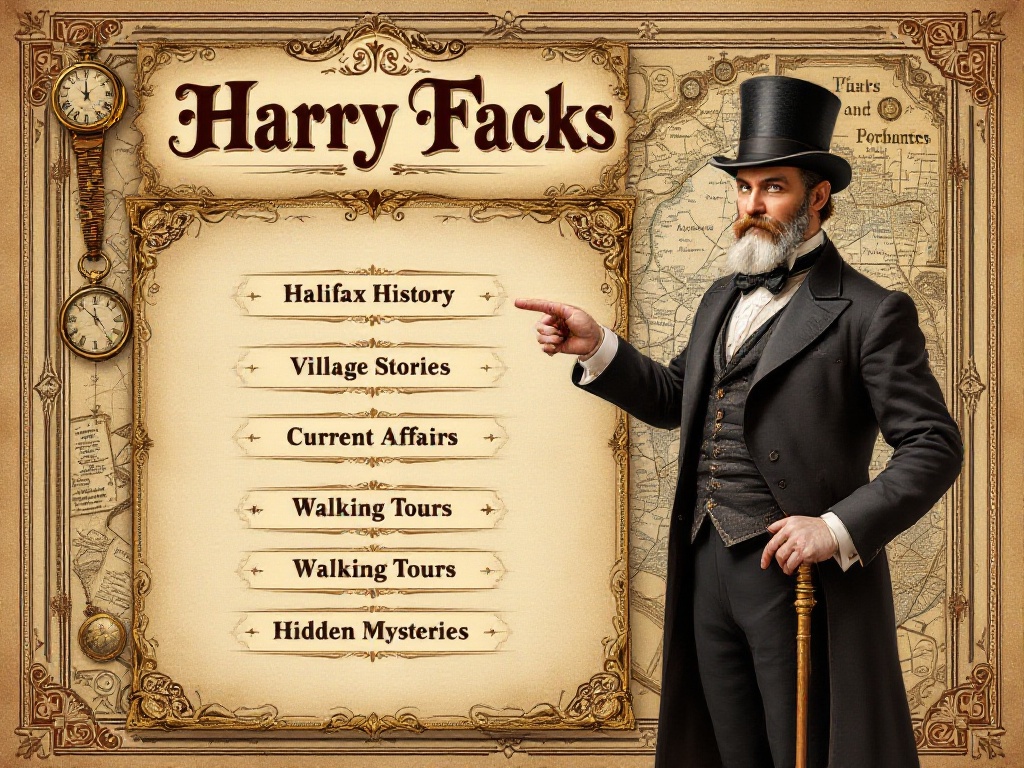Birth of a Market Town

As chronicled by Harry Facks 🎩
"My dear readers,
adjusts his blue and white striped scarf
Today, we explore how our beloved Halifax transformed from a parish center into a thriving market town. This evolution would set the stage for our future industrial prosperity.

An example of a local village medieval settlement
Picture, if you will, the bustling scene of the Thursday Market, granted by King Charles I in 1306. The market place - now our cherished Woolshops area - would come alive with the cries of merchants, the bleating of sheep, and the animated haggling of wool traders.
adjusts his spectacles enthusiastically
Ah, the wool trade! By the 1300s, Halifax had become renowned for its 'kersey' - a coarse wool cloth that clothed people across Europe. Our skilled weavers, working in their hillside homes, developed the famous 'Halifax pieces' - standardized lengths of cloth that became currency in their own right. The Piece Hall, though built later in 1779, stands as a grand testament to this industrial heritage.
But life wasn't all trade and commerce. The powerful Vicar of Halifax held court at the Manor of Wakefield, where local disputes were settled. And yes, we must mention our rather stern approach to justice - the Halifax Gibbet Law, first recorded in 1280. Under this law, cloth thieves caught red-handed could face our town's infamous execution device.
The religious life of early Halifax was equally fascinating. The Parish Church hosted guild meetings, where craftsmen gathered under the protection of patron saints. The Waterhouse Charity, established in 1635, helped poor cloth workers and their families - a true example of medieval community spirit.
The First Markets
"The establishment of our market rights was a pivotal moment:
- Charter granted in the early 13th century
- Market day set for Saturday
- Located in the heart of what we now call Old Market
- Overseen by the de Warenne administration
Trade Development
Our early market specialized in:
1. Local Produce
- Grain from surrounding townships
- Dairy products
- Livestock
- Local crafts
2. Early Wool Trade
- Raw wool sales
- Basic textile products
- Leather goods
- Dyestuffs
Market Infrastructure
"The market required significant organization:
- Designated market spaces
- Trading regulations
- Quality controls
- Fee collection systems
Community Growth
"The market's success led to:
- New street development
- Housing expansion
- Craft workshops
- Storage facilities
"This concludes Part 1: Foundations of our journey through Halifax's history. Shall we move forward to Part 2: Medieval Halifax, where we'll explore the fascinating development of the Halifax Gibbet Law?"
If you have enjoyed your visit to this website, please spread the word by clicking the 'like' and 'share' buttons below. Thank you


